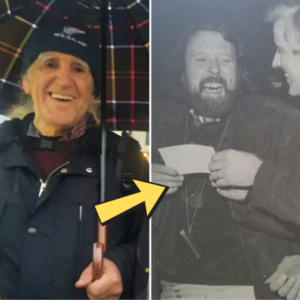At a rally in Las Vegas, Nevada, Donald Trump’s attempt to captivate his audience fell shockingly flat, with the crowd growing silent as he introduced a controversial new policy. The subdued response offered a rare glimpse into the anxieties driving Trump’s increasingly authoritarian rhetoric, particularly his deep-seated fear of losing control.

From the start of the event, Trump struggled to maintain his usual charisma. Slurring words and having difficulty following the teleprompter, his age and fatigue were on full display. Yet, beneath the performance issues, his underlying tactics remained as clear as ever: deny, attack, and never admit defeat. These are the principles Trump has adhered to throughout his career, often deflecting from reality by doubling down on fear-based narratives.
One of the most startling moments came when Trump proposed a drastic expansion of federal law enforcement across the country. Referring to cities like Aurora, Ohio, he vowed to “liberate” them by flooding small towns with heavily armed officers from agencies like ICE and the Department of Homeland Security. This notion of “liberation”—unlike the celebratory meaning the term might suggest—in Trump’s world implies aggressive crackdowns on immigrant communities, culminating in what he described as a “bloody battle” to deport large swaths of the population.
The silence from the crowd when Trump spoke of these plans was palpable. Expecting cheers or enthusiastic support, he repeated the word “liberate” several times, but was met with a muted response. It was a telling moment. What Trump saw as a rallying cry for law and order failed to resonate, suggesting that even his base was hesitant to embrace such extreme measures. His pause, followed by another effort to incite excitement, only deepened the awkwardness.
As if doubling down on his attempt to reignite the crowd, Trump reverted to his well-worn tactic of attacking opponents, particularly Vice President Kamala Harris. With unfounded claims that Harris had somehow received debate questions in advance—along with conspiratorial references to an earpiece—Trump echoed disinformation that originated from fringe media sources. These baseless accusations seemed like an effort to shift the focus away from his policy proposals, highlighting his reliance on fear and doubt to energize his supporters.
Trump’s invocation of the word “liberate” also reminded many of past controversies. During his presidency, he infamously tweeted “liberate Michigan” just before a group of extremists plotted to kidnap Michigan’s governor. This dangerous rhetoric not only inspired violent action but set a precedent for how his words could be weaponized. By using the same language in his Las Vegas speech, Trump once again flirted with the idea of stoking unrest, albeit with less success this time around.
The rally also showcased Trump’s need to rewrite his own history, particularly regarding his recent public appearances. He boasted of “monumental victories” and inflated poll numbers, with claims as absurd as having 92% of the public’s support—a number comparable to authoritarian leaders like Vladimir Putin. The crowd’s lukewarm reaction underscored how far removed these statements were from reality.
Trump’s need to appear invincible, even in the face of clear setbacks, can be traced back to the lessons he learned from Roy Cohn, a notorious lawyer who mentored Trump in his early years. Cohn, known for his ruthless tactics, taught Trump to never admit defeat, always counterattack, and use public perception to control narratives. This mentality was evident throughout the rally, as Trump refused to acknowledge any missteps, instead fabricating victories and doubling down on falsehoods.
In the latter half of his speech, Trump ventured into more divisive territory, fixating on immigration and conjuring fears of migrant invasions. He repeated a debunked claim that Haitian immigrants were “taking over” Springfield, Ohio—an assertion that local officials have categorically denied. Yet, despite the fact that these immigrants are legally residing in the area, Trump’s words continued to fan the flames of xenophobia. The silence from the crowd during these moments hinted at a discomfort with the level of extremism Trump was pushing.
Toward the end of his rally, Trump seemed to grow increasingly desperate, grasping for applause lines that never materialized. At one point, he declared that Kamala Harris would be “fired” by voters, mirroring his famous catchphrase. But instead of the rousing cheers this line might have once inspired, the crowd remained subdued, as if sensing that the reality behind Trump’s bluster was beginning to wear thin.
The silence of the crowd spoke volumes, revealing a growing disconnect between Trump’s authoritarian vision and the people he seeks to mobilize. His repeated attempts to stir outrage over immigration, law enforcement, and political opponents fell flat, accidentally unveiling the fear that seems to haunt him most—the fear of irrelevance.
This rally may have been intended as a show of strength, but it instead highlighted the deep anxieties driving Trump’s increasingly erratic behavior. His reliance on outdated tactics, authoritarian fantasies, and conspiracy theories may still appeal to a core group of loyal followers, but the muted reaction in Las Vegas suggests that his broader base is beginning to waver.
As Trump looks ahead to 2024, this event serves as a reminder that the strategies that once propelled him to power may no longer hold the same sway. His fear of losing control—whether over his narrative, his supporters, or the political landscape—was laid bare, making this rally as revealing as it was unsettling.





